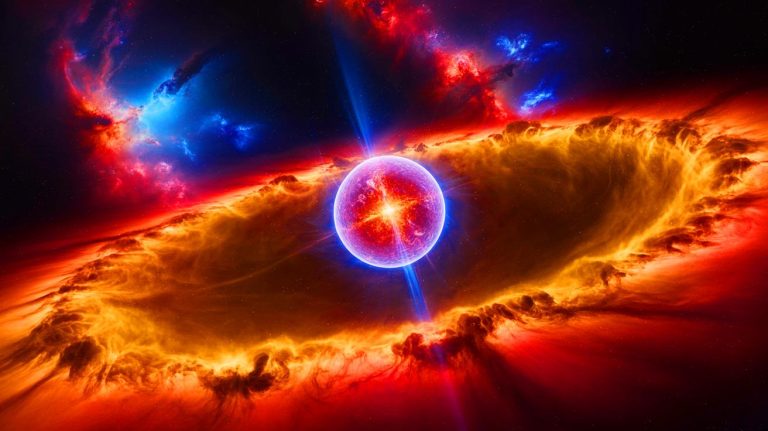| IN A NUTSHELL |
|
Astronomy has once again captivated our imagination with the recent discovery of a massive baby star devouring gas at a staggering rate. This phenomenon, observed in the star-forming region of Cepheus A, has provided astronomers with the clearest view yet of how massive stars grow. The star, named HW2, is a rare protostar weighing between 10 to 20 times the mass of our sun. This discovery not only sheds light on the formation of massive stars but also deepens our understanding of the cosmic processes that lead to their birth.
The Role of Ammonia as a Cosmic Beacon
Ammonia, a molecule commonly found in interstellar space, played a pivotal role in this groundbreaking observation. Using the Very Large Array radio telescope network in New Mexico, astronomers were able to detect the radio glow emitted by ammonia molecules. This allowed them to map the gas swirling around HW2, despite the thick clouds of dust that obscure visible light. Ammonia’s unique properties enabled researchers to pierce through the dense dust cocoon, revealing the star’s accretion disk.
Alberto Sanna, the study leader from Italy’s National Institute for Astrophysics, emphasized the significance of these findings. He pointed out that the same physical processes responsible for forming smaller stars also apply to massive stars like HW2, albeit on a larger scale. The observation of ammonia has become a crucial tool in understanding the growth patterns of stars across different sizes and masses.
Turbulent Disks and Their Impact on Stellar Growth
One of the most intriguing aspects of HW2’s growth is its accretion disk, which fuels the star at an extraordinary rate of about two Jupiter masses per year. This rapid accumulation of mass is one of the fastest ever recorded for a stellar object. Observations revealed an uneven distribution of gas within the disk, with the eastern side containing nearly twice as much material as the western side.
The turbulence and imbalance observed in the disk suggest that external forces might be at play. It is theorized that a nearby filament-like stream of gas and dust acts as a cosmic pipeline, channeling fresh material to the disk. Such structures are believed to connect forming stars with their outer envelopes, ensuring a continuous supply of material for growth. The identification of these structures is a testament to the complex interactions that govern star formation.
Future Implications and Predictions
The discovery of HW2 and its rapid growth rate has opened new avenues for research in astrophysics. While the streamers around HW2 remain unseen for now, the study has laid the groundwork for future telescopes to test and verify these predictions. Understanding how long HW2 can continue to grow is crucial, as it will influence the star’s eventual fate and its potential to end in a supernova explosion.
The findings from this study will soon be published in the journal Astronomy & Astrophysics, providing the scientific community with valuable insights into the mechanisms of star formation. As technology advances, astronomers anticipate uncovering more about the cosmic processes that shape our universe, offering a more comprehensive understanding of the life cycles of stars.
The Significance of Stellar Discoveries
Discoveries like HW2 highlight the dynamic and ever-evolving nature of our universe. Each new observation provides a piece of the puzzle, helping scientists develop a more complete picture of stellar formation and evolution. The ability to study stars at different stages of their life cycle enhances our knowledge of cosmic phenomena and their impact on the universe.
As astronomers continue to explore the cosmos, the questions surrounding star formation and their growth processes remain a focal point of research. The insights gained from HW2 and similar discoveries will undoubtedly influence future studies, driving the quest for knowledge and understanding of the universe’s most fundamental processes. What other secrets do the stars hold, and how will they reshape our understanding of the cosmos?
Did you like it? 4.7/5 (22)







Wow, that’s one hungry star! 🌟 Does this mean HW2 could become a black hole one day?